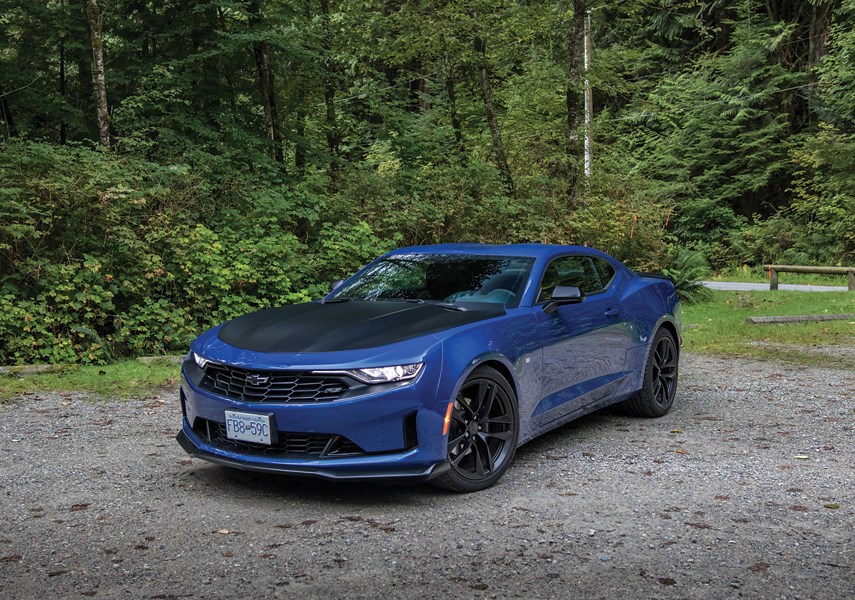Over at Porsche, much complaining is being done about the company’s decision to call their top-level Taycan the Taycan Turbo, when it doesn’t have any turbochargers.
The argument is that “turbo” is just shorthand for “fast” these days.
Not so with the Camaro Turbo, which does come with a turbocharger, and is one sixth the price of the non-turbo Taycan Turbo. This is the base-model version of Chevrolet’s pony car, and when it comes to performance, it’s a bargain.
Previously, Chevrolet’s strategy had been to pit V-8 versions of the Camaro directly against the Mustang, and have a V-6 version to line up against the more affordable Mustang Ecoboost. The strategy worked, for the most part, yet the Mustang surged ahead in sales.
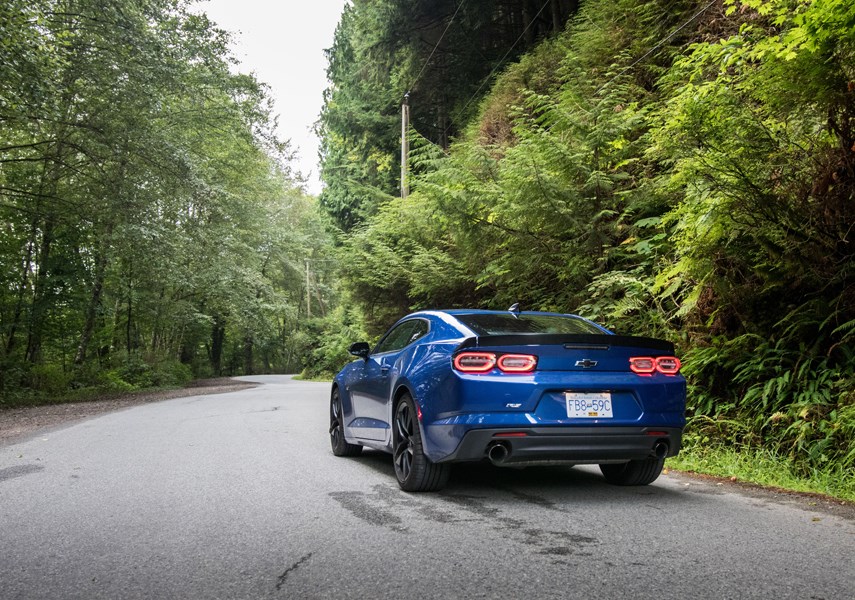
Now, your affordable Camaro comes with a four-cylinder turbocharged engine, and a host of available upgrades. It looks good, drives very quick, and has one or two ergonomic foibles. Let’s spool up the turbo and see what this Camaro can do.
Design
Well, it certainly makes an entrance. With a blacked-out hood and long nose, the Camaro 1LE is a curious blend of retro-themed hot-rodding cues and modern, angular design.
It’s better proportioned than either the Mustang or the Dodge Challenger, although the grille is still a little fussy. The best angle on the car is from the rear, with quad LED tailights and shiny twin exhausts.
Because it’s built to accept some ridiculously powerful V-8 powertrains, the Camaro does seem a little bulky for a four-cylinder vehicle. There’s a lot of air under that sheet metal.
However, for a base model with one upgrade package, it really looks the part. Twenty-inch wheels round things out for massive curb appeal.
Environment
Right away, here’s the Camaro’s biggest problem. It may have a big engine bay under that long nose, but its cabin is extremely cramped and claustrophobic.
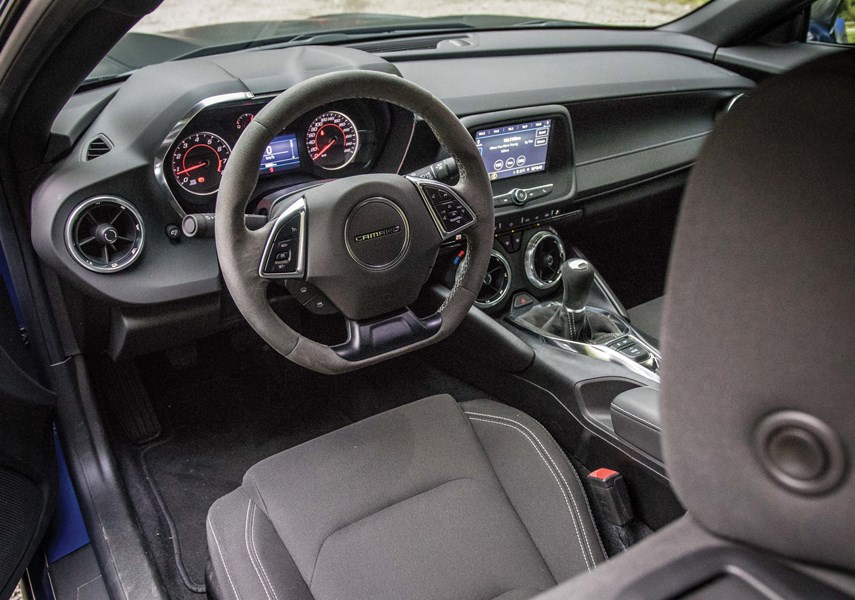
If you want to occasionally haul around a couple of young pony-car fans in the back seat, then you’re going to want a Mustang instead. The Camaro will carry kids, but only barely, and even kids in the single digit ages will find their legs cramped.
Further, the cabin itself has pretty poor visibility, with a front view that’s more coastal defence pillbox than performance car. All you see is hood, and lots of it.
All you see around you is plastic, and lots of it here too. You have to forgive the Camaro a bit for its fairly low-grade interior, because this is, after all, the base model car. The touchscreen is at a funny angle, too.
But once you settle in for a few days, the Camaro is actually not as unworkable as it might seem. Cargo space and rear seats remain a disappointment, but the car drives smaller than you expect.
Performance
The Camaro’s 2.0-litre turbocharged four-cylinder engine makes 275 horsepower at 5,600 r.p.m., and 295 foot-pounds of torque at 3,000 r.p.m. If you’re thinking those figures skew towards the lower end of the rev range, then you’d be right.
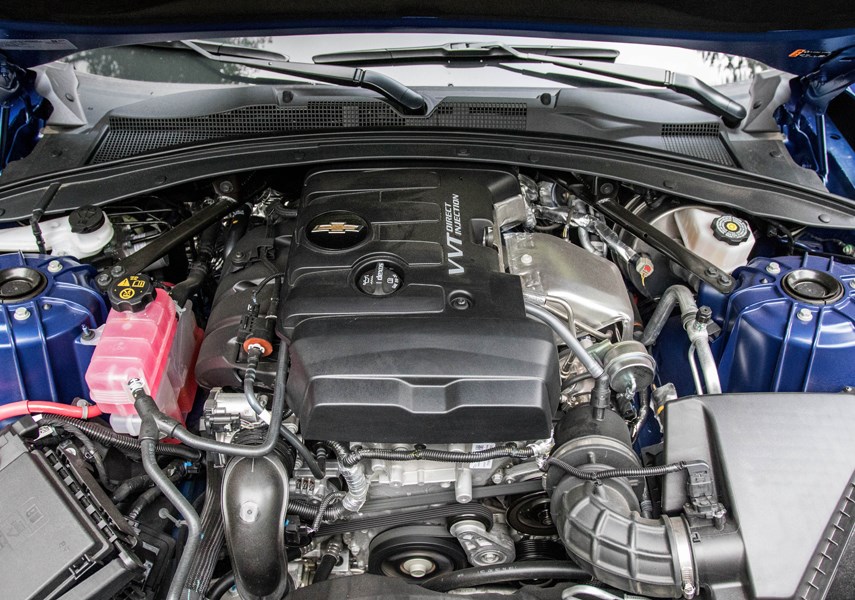
Out of curiosity, I went and looked up what a V-8 Camaro from the 1990s had for output, and while the four-cylinder Camaro is down on power by about 10 per cent, it’s the same torque-rich delivery. With a meaty-feeling six-speed manual transmission handling shifting duties, the Camaro is nothing like some high-revving import.
It does, however, have the means to run rings around almost any V-8 Camaro of the past. The 1LE package includes performance Goodyear tires, a stiffer suspension, uprated Brembo four-piston brakes, a limited-slip differential, and improved cooling. The package costs $5,195, and also includes suede touches throughout the cabin.
Essentially, the Camaro takes a workhorse four-cylinder engine and applies a host of upgrades that turn it into a genuine track car, capable of hanging with the big dogs at the track. Power is plentiful, especially with torque delivery, and if your ears miss the thunder of a Chevrolet V-8, then the rest of you will be impressed with how quick and light on its feet this big coupe is.
Turn-in is direct, with slightly heavy steering. Overall grip is huge, independently tested to over 1.0g of cornering. With the 20-inch wheels, the Camaro can occasionally crash over bumps, but it handles transitions well, and the chassis feels very stiff.
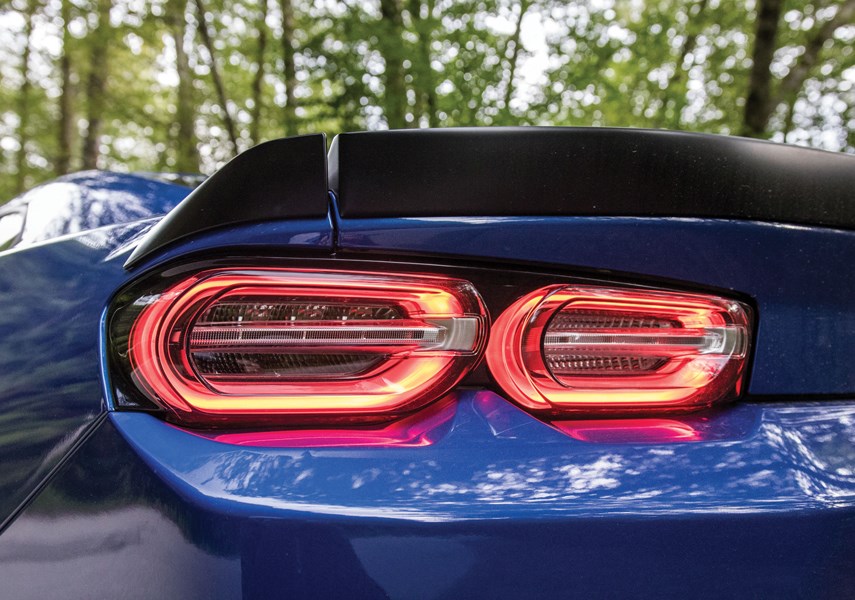
When the Camaro name first debuted, some GM executive joked that it was named for a small, fast animal that ate Mustangs. This still rings true, as the Camaro feels just that little bit tighter in execution than the Mustang.
At $35,760, the Camaro is about the same price as a well-optioned Subaru WRX. The latter has a bit more all-weather capability, but if you’re looking for a performance coupe that can lap repeatedly, or just a more pure rear-wheel-drive feel, that makes the Camaro something of a bargain.
Features
While its touchscreen may be at an odd downward angle, the Camaro does at least offer everything you need in a modern car. Apple CarPlay and Android Auto means you won’t miss not having onboard navigation.
Fuel economy figures are none too shabby, hitting 11.9 litres/100 kilometres in the city and 7.9 l/100 km on the highway. There’s no reason you couldn’t commute in your Camaro.
Green light
Striking design; excellent performance; relatively affordable.
Stop sign
Cramped interior; no V-8 soundtrack.
The checkered flag
The Camaro Turbo 1LE takes all the great things about a pony car and turbocharges them. Great, accessible fun.
Competition
Mustang Ecoboost Performance ($33,699): For a little less than the 1LE, the Mustang offers less track-focused performance, and a little more livability. With more cargo space, better room for passengers, and an interior you can actually see out of, the Mustang is a bit friendlier as a daily driver.
However, the Camaro does offer mechanical advantages, especially with its uprated cooling capacity. Which is best? This is an argument that’s been going on for half a century. Be thankful that the choice is so difficult.
